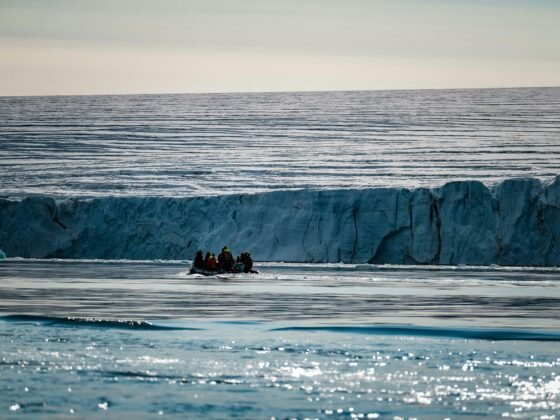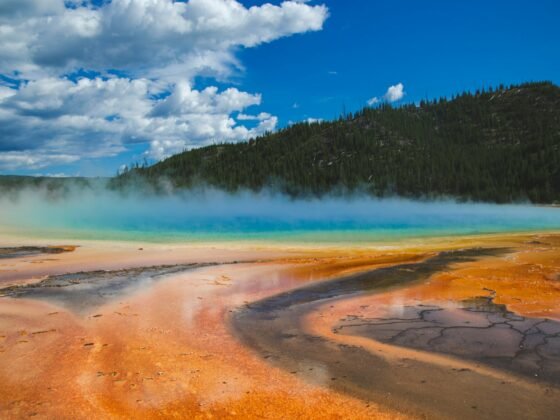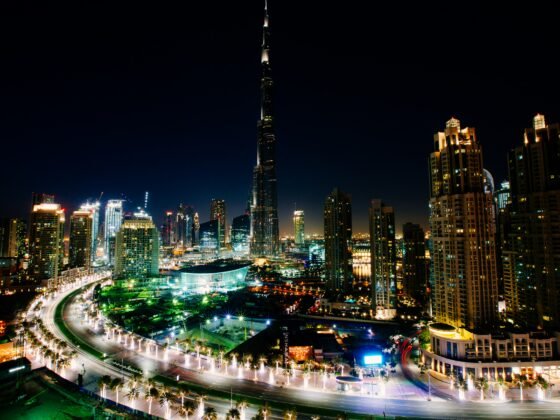I still remember the moment I realized I was over it. Standing shoulder to shoulder with a sea of strangers on Italy’s Amalfi Coast, trying to snap a photo of a sunset that a hundred phones were already capturing. The view was gorgeous, yes but I felt like I was watching someone else’s vacation unfold. What I craved wasn’t another postcard-perfect location. I wanted something quieter, more personal. I wanted the smell of salt and grilled sardines drifting from a grandmother’s open window, the clink of glasses over a harbour dinner where no English was spoken, and streets where fishing boats outnumbered tourists.
That yearning has led me, over the years, to stumble across a handful of small coastal villages that feel like Europe’s best-kept secrets. Places not polished for Instagram, but worn and real in the most beautiful way. Let’s dive in. I’ve gathered some of my favourite lesser-known coastal villages in Europe, where the magic is subtle, slow, and absolutely unforgettable.
Cudillero, Spain – Asturias’ Cliffside Secret
The first time I arrived in Cudillero, I didn’t even get my bag out of the car before just… stopping to stare. The village cascades down a steep cliff in a jigsaw of pinks, blues, and ochres, all converging around a tiny harbour where fishing boats still rule the tide.
What did I do there? Nothing complicated. I sat in the sun with a glass of sidra (Asturian cider), picked at a plate of squid, and watched the day unravel lazily around me. As night fell and the day-trippers disappeared, I wandered the narrow streets that twined like vines up the hillside—and felt like the village had gently let me in.
Tip: Getting there is easiest by car from Oviedo or Gijón. Accommodation is limited, so if you want to stay overnight, book well in advance, especially in summer.
Collioure, France – Painters, Anchovies & Pastel Dreams
Tucked into the Vermilion Coast near the Spanish border, Collioure is the kind of place that makes you question why it isn’t on everyone’s bucket list. I remember walking along the curving bay, the medieval Château Royal behind me, pastel shutters glowing in the evening light. I kept thinking, This place looks painted. Turns out Matisse and Picasso thought so too.

Photo by Nicolas HIPPERT on Unsplash
But Collioure isn’t just for the artists. It’s for lovers of anchovies, yes, anchovies, which here are delicately prepared and best enjoyed with a crisp local white wine on a terrace kissed by the Mediterranean breeze.
Tip: Avoid the summer crowds by visiting in the shoulder months. Trains from Perpignan make this an easy getaway even without a car.
Perast, Montenegro – The Adriatic’s Quiet Soul
Kotor may be the headline act, but Perast is the quiet ballad that lingers longer. It’s just a slip of stone buildings along the Bay of Kotor, watched over by ancient churches and jagged mountains. What struck me most here wasn’t the scenery, it was the silence.
One evening, I joined locals on the waterfront steps, sipping a beer as the sun melted behind the peaks. We didn’t speak the same language, but we shared the same sky, and I felt like I belonged to the moment in a way I hadn’t for a long time.
Tip: Just 20 minutes by bus or taxi from Kotor, Perast makes a peaceful base. Consider staying overnight to really feel the rhythm of this place.
Veli Lošinj, Croatia – Pines, Dolphins & Healing Air
Croatia’s coast has its stars, like Hvar or Dubrovnik, but Lošinj is for those who want something softer. I found Veli Lošinj while island-hopping, and it quickly became a favourite. The air here is scented with pine and wild herbs, believed to have healing properties. I’d never thought much about “healing air” until I walked those shaded coastal trails, the sea flickering through trees like light through stained glass.
Beyond its calm, the village also hosts a marine research centre where you can learn about the local dolphins and if you’re lucky, watch them leap offshore.
Tip: Ferries run to the island but schedules vary seasonally. May and September are ideal for fewer crowds and perfect weather.
Portmeirion, Wales – An Italian Daydream in Britain
It sounds odd, but one of the most surreal coastal spots I’ve visited wasn’t in the Med, it was in North Wales. Portmeirion is an Italianate fantasy tucked into the Welsh coast, built in the 20th century as an artistic utopia. The first time I saw it, I thought I’d stepped into a dream or maybe a film set. And I had, as it was famously featured in the 1960s show The Prisoner.
With pastel facades, domes, and manicured gardens, Portmeirion is whimsical and otherworldly. I stayed overnight in one of its quirky guesthouses and woke to the tide creeping in below my balcony, more memorable than many a luxury hotel.
Tip: Combine with a visit to Snowdonia National Park. One day you’re climbing peaks, the next you’re sipping tea under a dome.
Cadaqués, Spain – Where Dali Dreamed
The Costa Brava often feels overrun, but Cadaqués is a defiant holdout. Winding cobblestone lanes, whitewashed houses, and azure shutters give this village a timeless charm. I came in the off-season, when the crowds had thinned, and felt like I’d wandered into a Mediterranean reverie.
Dalí lived nearby, and you can feel his presence in the surreal coastal landscapes and sudden bursts of eccentricity. My days here were slow; paella by the water, hikes to Cap de Creus, evenings lit by candlelight in old stone taverns.
Tip: It’s hard to reach. That’s the point. The winding road keeps the crowds away. Come midweek in spring or autumn for peak tranquillity.
Why These Places Matter More Than Guidebooks Let On
So why do I keep searching for these lesser-known spots? It comes down to one word: atmosphere.
- In Cudillero, the cries of gulls bounce off the cliffs.
- In Perast, church bells echo across still water.
- In Veli Lošinj, pine needles crackle underfoot as waves lap quietly nearby.
These aren’t moments you schedule, they’re ones you feel. And they stay with you.
Smaller villages bring smaller crowds, yes, but they also offer deeper connections. Meals taste like tradition. Conversations aren’t rehearsed. And time, somehow, moves differently.
Some of my best discoveries started with a wrong turn or a scribbled napkin note from a bartender. Here’s how you can uncover your own off-the-map treasures:
- Travel off-season – May, June, September, and October are sweet spots: warm, but quiet.
- Follow the locals – If the harbour restaurant is packed with locals, that’s the place to eat.
- Be flexible – Limited buses or ferry schedules? Good. That’s often the trade off for authenticity.
- Rent a car – Freedom to roam is worth the extra effort.
- Stay overnight – After the day-trippers leave, the village truly comes alive—or perhaps more accurately, returns to itself.
Final Thoughts: What the Big Names Can’t Offer
Europe’s coastline dazzles at every turn, but it’s in the quieter, more obscure corners that I’ve found the travel moments that truly stayed with me. Whether sipping cider in a cliffside square, watching the sunset gild stone walls, or waking to the sound of waves beneath a pastel balcony, these are the memories I carry.
Next time you’re tempted by the familiar allure of Santorini or Nice, try something else. Turn the map sideways. Choose the crooked road. Seek out the places without hashtags, where the tide, not the tour group, sets the rhythm.
You won’t just take photos there. You’ll live a story worth retelling.
Similar FAQ
Where in Europe feels like the Caribbean?
For a Caribbean feel without the crowds, Europe has some true hidden gems. Spain’s Cíes Islands in Galicia are part of a protected national park with dazzling white sand at Playa de Rodas and strict visitor limits, keeping them pristine and quiet. In Portugal, the little-known island of Porto Santo, near Madeira, offers a nine-kilometre stretch of golden sand and calm, clear seas with far fewer visitors than the Algarve. Formentera’s beaches can be busy in summer, but outside peak months its shallow turquoise waters feel like a secret escape. These little-visited spots bring tropical vibes without long-haul travel.
Where in Europe are the most beautiful beaches?
Europe hides some breathtakingly beautiful beaches far from the crowds. In Spain, Galicia’s Cíes Islands offer Playa de Rodas, a sweep of white sand and turquoise water in a protected national park. Portugal’s remote Porto Santo, a short hop from Madeira, has nine kilometres of golden shoreline yet remains largely overlooked. In Greece, the tiny island of Koufonisia has dreamy coves and crystalline water but far fewer visitors than Santorini or Mykonos. Albania’s unspoiled Karaburun Peninsula reveals wild, hidden bays that feel like a secret. Even Sardinia, known for its coast, shelters secluded gems such as Cala Goloritzé, accessible only by boat or hike. These quieter corners of Europe combine spectacular natural beauty with a sense of discovery.
Where are the quietest beaches in Europe?
Some of Europe’s quietest beaches lie off the beaten path: Playa de Rodas in Spain’s Cíes Islands, Porto Santo in Portugal’s Madeira archipelago, Albania’s wild Karaburun Peninsula, Koufonisia in Greece, and Cala Goloritzé in Sardinia. Each offers unspoiled sands, clear waters, and a peaceful escape far from tourist crowds.
Main Photo by Biljana Martinić on Unsplash












